Required Minimum Distributions
Required Minimum Distributions (RMDs) play a crucial role in the financial planning landscape, ensuring that individuals draw down their retirement savings during their lifetime. Gaining a comprehensive understanding of RMDs can help you maximize your retirement income, minimize taxes, and efficiently plan your estate. This knowledge journey explores the core concepts, rules, and strategies surrounding RMDs, as well as how they intersect with tax and estate planning matters.
Understanding Required Minimum Distributions (RMDs)
RMDs are minimum amounts that account holders must withdraw from their tax-deferred retirement accounts, such as traditional individual retirement accounts (IRAs), 401(k)s, and other similar plans once they reach a certain age, usually 72 (or 70.5 if one turned 70.5 before January 1, 2020). It ensures that account holders eventually start withdrawing and paying taxes on these accumulated retirement savings, as they served to generate tax-deferred income growth during one’s working years.
Missing deadlines can lead to a hefty tax of 50% on the amount not withdrawn. The first RMD is due by April 1 of the year following the year one turns 72 (or 70.5 if one turned 70.5 before January 1, 2020). For subsequent years, the deadline to take RMDs is December 31.
RMDs are computed using a combination of account balances and life expectancy. One must divide the account balance as of December 31 of the preceding year by the distribution period, which is based on the account holder’s life expectancy according to the Uniform Lifetime Table in the IRS guidelines.
Required Minimum Distributions (RMDs) are the minimum amounts that account holders of tax-advantaged retirement plans must withdraw annually once they reach a certain age. The age requirement for RMDs was 70 ½ until the recent passage of the Setting Every Community Up for Retirement Enhancement (SECURE) Act, which increased the required age to 72 for those who turn 70 ½ after December 31, 2019. The deadline for taking the first RMD, known as the ‘required beginning date,’ is April 1 of the year following the year the account holder turns 72. After the initial RMD, subsequent withdrawals must be made by December 31 each year.
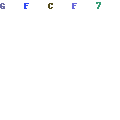
What are Required Minimum Distributions (RMDs)?
When dealing with multiple retirement accounts – like several IRA accounts – it’s important to remember that RMDs must be calculated separately for each account. Despite this, the account holder may choose to withdraw the total amount from a single IRA, but this option does not apply to 401(k)s. Additionally, strategies such as qualified charitable distributions (QCDs) and the conversion of traditional IRA or 401(k) accounts to Roth accounts should also be considered. While these conversions may generate a taxable event, they are not subject to RMDs. Applying these strategies can help maximize the potential benefits of RMDs and retirement planning.
The calculation of RMDs varies depending on the type of retirement account. For traditional IRAs and most 401(k) plans, the RMD amount is calculated by dividing the account balance at the end of the previous year by the applicable distribution period or life expectancy, which can be found in the IRS life expectancy tables. The specific table to use depends on the account holder’s marital status, age, and whether the account-holder’s spouse is more than ten years younger, and the sole beneficiary of the IRA or plan.
Roth IRAs, which are funded with after-tax dollars and allow for tax-free withdrawals in retirement, are treated differently as they do not have RMDs during the lifetime of the original account holder. This can provide estate planning benefits, as it allows the entire account balance to grow tax-free. However, Roth IRA beneficiaries may be subject to RMDs when they inherit the account. Similar to traditional IRAs and 401(k) plans, the calculations for determining RMDs for inherited Roth IRAs are based on the beneficiary’s life expectancy.
Failure to comply with RMD rules can result in significant financial penalties. If an actual distribution is less than the required minimum amount, a penalty tax of 50% may be imposed on the difference. In some cases, the Internal Revenue Service (IRS) may waive this penalty due to reasonable errors, provided that the account holder demonstrates corrective actions. To request a waiver for the penalty, the account holder must file Form 5329 with the IRS and provide an explanation of the shortfall.
Understanding Required Minimum Distributions (RMDs) rules and regulations is essential for effective retirement and tax planning, especially with recent changes due to the SECURE Act. It is crucial to be aware of the age requirements and deadlines for RMDs, as well as the penalties for noncompliance. Knowing how RMD rules apply differently to various types of retirement accounts can help in making informed decisions about retirement savings and distributions.
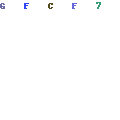
Understanding Required Minimum Distributions (RMDs) and Life Expectancy Tables
RMDs are mandatory withdrawals individuals must take from their retirement accounts, such as 401(k)s and traditional IRAs, once they reach the age of 72 (or 70.5 if they reached 70.5 before January 1, 2020). RMDs are calculated based on the account holder’s life expectancy, according to specific tables published by the Internal Revenue Service (IRS). Correctly calculating RMDs is essential to avoid substantial tax penalties, which can be as high as 50% on the amount not withdrawn. By being knowledgeable about these requirements and implementing effective tax planning, you can maximize your retirement distributions and minimize potential penalties.
Three crucial life expectancy tables provided by the IRS impact RMD calculations: the Uniform Lifetime Table, the Joint and Last Survivor Table, and the Single Life Expectancy Table.
- The Uniform Lifetime Table is the most commonly used and refers to account owners who do not have a spouse who is their sole beneficiary and more than a ten-year age difference.
- The Joint and Last Survivor Table applies to account owners who have a spouse as their sole beneficiary, and their spouse is more than ten years younger than them.
- The Single Life Expectancy Table is used for individuals who have inherited a retirement account.
The process of calculating RMDs involves dividing the account balance on December 31 of the previous year by the appropriate distribution period or life expectancy factor. This factor is found on the relevant life expectancy table mentioned earlier.
For instance, suppose you are a 75-year-old individual using the Uniform Lifetime Table. The table shows a life expectancy factor of 22.9 years. If your account balance at the end of the previous year was $100,000, dividing it by 22.9 would result in an RMD of approximately $4,367.
In a scenario where a couple has a significant age difference and uses the Joint and Last Survivor Table, the RMD calculations will be influenced by the younger spouse’s life expectancy, resulting in lower RMD amounts. This approach allows the couple to spread their RMDs over a more extended period, which may reduce the overall tax burden.
In contrast, the Single Life Expectancy Table, mainly used for inherited IRAs, provides beneficiaries with a way to spread the distributions over their entire life expectancy.
For example, if a 50-year-old beneficiary inherits an IRA with a balance of $200,000, they would use the Single Life Expectancy Table to find their life expectancy factor of 34.2 years. Consequently, their first-year RMD would be approximately $5,848. The beneficiary would subtract one from their original life expectancy factor each year to calculate their subsequent RMDs.
Understanding and utilizing the appropriate IRS life expectancy tables is crucial for calculating Required Minimum Distributions (RMDs) accurately. Knowing the differences between the Uniform Lifetime Table, the Joint and Last Survivor Table, and the Single Life Expectancy Table allows account holders and their beneficiaries to optimize their RMD strategy, minimize tax consequences, and preserve their retirement savings.
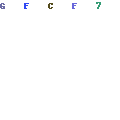
Strategies for Managing Required Minimum Distributions (RMDs)
It is essential to manage RMDs effectively, and one strategy to achieve this is account consolidation. By combining multiple retirement accounts, such as IRAs or 401(k)s, into a single, larger one, the RMD calculation process becomes simplified and easier to manage. This approach helps avoid calculating multiple RMDs, potentially reduces administrative fees, and offers a more comprehensive view of retirement savings and investment performance. Consequently, it allows for better coordination of an overall investment strategy and a smooth connection between applicable IRS life expectancy tables and RMD management.
Another strategy to consider is qualified charitable distributions (QCDs). QCDs are a tax-efficient way to donate required minimum distributions from an IRA directly to a qualified charity, bypassing the account holder’s taxable income. In doing so, the account holder can potentially lower their income tax liability while also satisfying their RMD requirement. Note that QCDs are only available for those age 70½ or older and have an annual limit of $100,000 per individual.
Roth IRA conversions are another approach for managing RMDs and their tax implications. By converting a traditional IRA to a Roth IRA, individuals can effectively eliminate future RMDs (as Roth IRAs do not require them), reduce their taxable income in retirement, and potentially leave a more tax-efficient inheritance for their heirs. It’s important to note that the conversion process does involve paying income taxes on the amount being converted, which may not be suitable for everyone. However, if planned carefully and strategically, this could prove beneficial in the long run.
Lastly, consider the timing of your RMDs and the impact on your overall financial plan. Some retirees may choose to take their RMDs earlier in the year to secure their required income, while others may wait until closer to the deadline for additional tax planning opportunities. By closely monitoring your income sources and tax situation and working with a financial advisor, you can implement a plan to optimize the timing of your RMDs to support your goals and objectives.
Investing in different types of assets is an effective RMD planning technique for balancing the overall portfolio and minimizing tax implications. Integrating assets that generate a lower amount of taxable income, such as municipal bonds, dividend-paying stocks, or real estate investment trusts (REITs), can assist in managing the impact of RMDs on your financial plan. Diversifying investments also has the potential to reduce overall portfolio risk and mitigate the influence of market volatility on RMDs. Therefore, it is essential to regularly review your investment strategy and asset allocation, ensuring they are aligned with your long-term financial goals and risk tolerance.
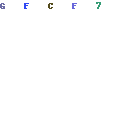
Understanding Required Minimum Distributions and Tax Implications
As you diversify your portfolio for RMD planning, it is crucial to understand the tax implications of Required Minimum Distributions (RMDs), which may significantly impact your overall financial and tax situation. The primary purpose of RMDs is for the government to collect their share of your tax-deferred savings, necessitating a specific percentage withdrawal from your retirement account each year once you reach 72 years old. Applicable tax-deferred accounts include traditional IRAs, 401(k)s, and 403(b)s. Generally, these distributions are taxed as ordinary income in the year you receive them. By diversifying your investments and understanding RMD tax implications, you can make informed decisions in managing your RMDs as part of your comprehensive financial plan.
The tax treatment of your RMDs may vary depending on the type of account and the nature of the distribution. For example, qualified distributions from Roth IRAs are not subject to federal income tax as you have already paid taxes on your contributions upfront. However, non-qualified distributions, taken before meeting certain conditions like being at least 59 and a half years old and five years after your initial Roth IRA contribution may be taxable. This highlights the importance of knowing the difference between qualified and nonqualified distributions to minimize your tax liability.
To reduce taxes associated with RMDs, one strategy is to consider converting a portion of your traditional IRA into a Roth IRA. Although you will have to pay taxes on the amount converted, this move allows your retirement savings to grow tax-free in a Roth IRA, and no RMDs are required during your lifetime. Additionally, your beneficiaries will not have to pay taxes on qualified distributions either. However, it is crucial to weigh the tax consequences of the conversion against the potential long-term benefits of tax-free growth.
Another strategy for minimizing tax liability on RMDs is to make Qualified Charitable Distributions (QCDs). QCDs are direct transfers of funds from an IRA, payable to a qualified charity and count towards satisfying your RMDs for the year. With this method, your RMD-related tax liability might be reduced or eliminated as the amount donated is not included in your adjusted gross income (AGI), resulting in potential tax savings. However, there is a limit of up to $100,000 per individual per year for QCDs.
Estate planning is an essential aspect of managing your wealth and ensuring that your assets are distributed according to your wishes after your death. One critical component of estate planning is understanding and managing required minimum distributions (RMDs) from retirement accounts such as IRAs and 401(k)s.
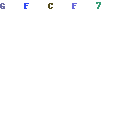
Estate Planning and Required Minimum Distributions (RMDs)
It is also vital to plan your RMD withdrawal timing. For instance, if you foresee a significant shift in your tax situation in the future, such as a drop in income, you might want to postpone RMDs until the year when your tax liability is lower. Keep in mind, though, that delaying your first RMD comes with certain restrictions and could result in a higher taxable income in the following year. It is advisable to consult a financial or tax professional for personalized advice on the tax implications of your RMDs and strategies to minimize your tax liability.
RMDs are the minimum amounts that account holders must withdraw from their retirement accounts each year once they reach the age of 72. These withdrawals can impact your estate in several ways, ranging from taxation to beneficiary designations.
The interaction between RMDs and estate planning is essential to consider because these distributions can have a significant impact on the value of your estate and the inheritance your beneficiaries ultimately receive. RMDs increase your taxable income, which could lead to a higher estate tax liability if your estate exceeds the federal estate tax exemption limit ($11.7 million as of 2021). Additionally, income taxes may be owed on the RMDs by your beneficiaries upon withdrawal, reducing the value of their inherited portion of the retirement account.
Selecting appropriate beneficiaries for your retirement accounts is critical to ensure a smooth and efficient transfer of assets after your death. One option is to designate a trust as the beneficiary of your retirement account, which offers added control over the distribution of assets and potential tax benefits. However, it’s crucial to establish a properly drafted trust and be aware of specific rules surrounding trusts as IRA beneficiaries to avoid unintended tax consequences.
Understanding the treatment of inherited IRAs is crucial in the estate planning process. When non-spousal beneficiaries inherit an IRA, they must withdraw the entire account balance within ten years, regardless of their age. This requirement can result in a substantial income tax burden for beneficiaries who must take large additional distributions in a shorter timeframe. Spousal beneficiaries, on the other hand, have the option to treat the inherited IRA as their own or roll it over into an existing retirement account, offering more flexibility in withdrawal planning and potential income tax savings.
Finally, mitigating the impact of RMDs on your estate and beneficiaries involves several best practices. These strategies may include Roth conversions, where you pay the income tax upfront and convert your traditional IRA to a Roth IRA, thus eliminating future RMDs and allowing for tax-free growth and withdrawals. Additionally, consider using charitable remainder trusts (CRTs) or qualified charitable distributions (QCDs), which can simultaneously fulfill philanthropic goals while reducing the taxable income from RMDs. By integrating these strategies into your estate plan, you can help minimize the tax burden and maximize the value of your retirement accounts for your beneficiaries.
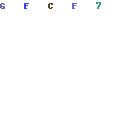
Throughout this exploration of RMDs, we have delved into their foundational aspects, rules, and implications on tax and estate planning. By understanding and successfully implementing the strategies discussed, you can optimize your financial future, ensuring a comfortable and secure retirement. As the regulatory landscape continues to evolve, staying informed about potential changes to RMD policies and seeking professional guidance when needed will ensure you can navigate any challenges and confidently manage your retirement assets.



Leave a Reply